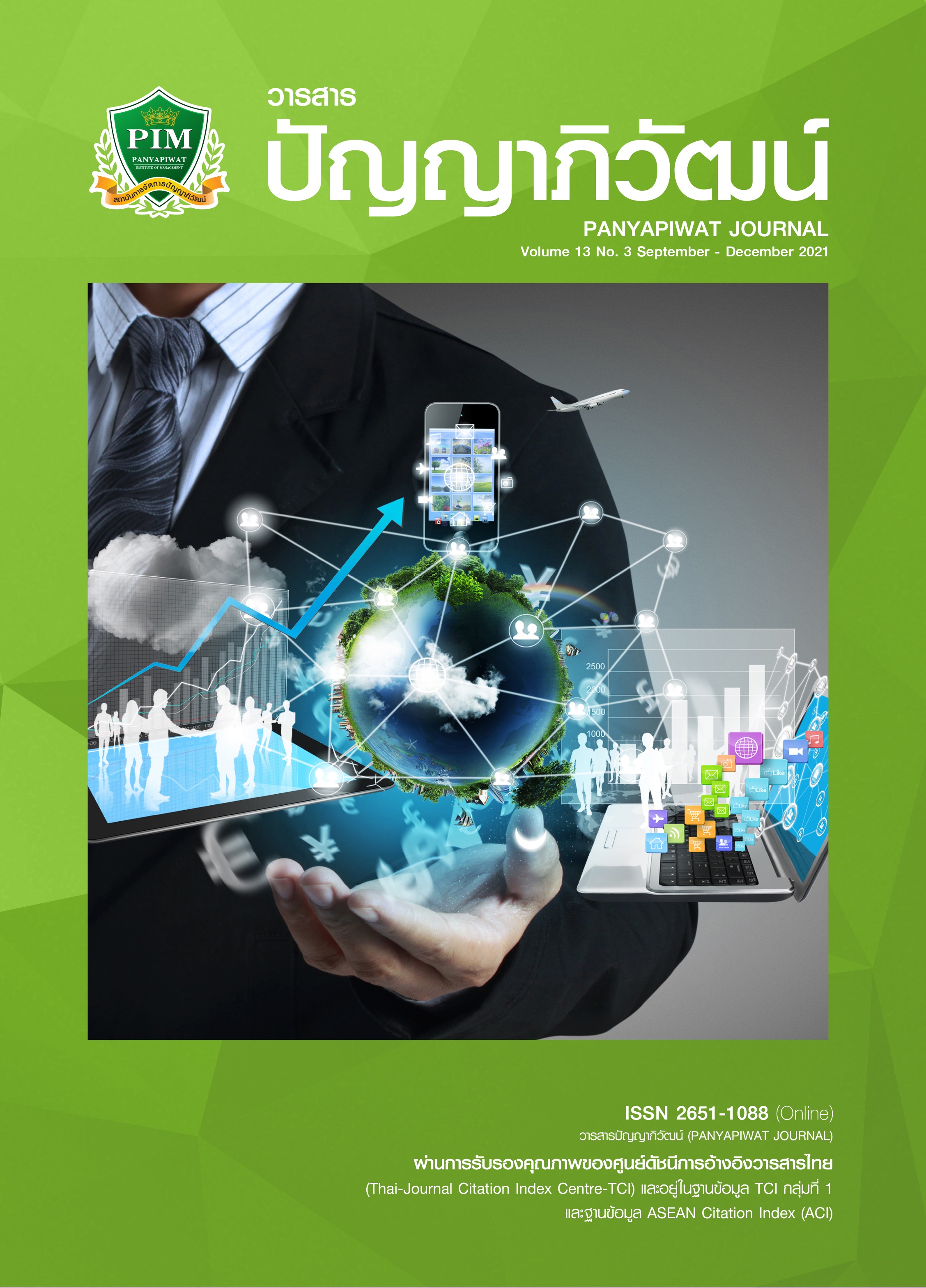THE DEVELOPMENT MODEL OF ONLINE LEARNING VIA GOOGLE CLASSROOM FOR EDUCATION TECHNOLOGY AND COMPUTER EDUCATION STUDENTS IN FACULTY OF EDUCATION MAHASARAKHAM UNIVERSITY
Main Article Content
Abstract
The purposes of this research were (1) to develop an online learning via google classroom model for students in the Educational Technology and Computer Education Program of the Faculty of Education, Maha Sarakham University; (2) to study the team working of online learning via google classroom model; and (3) to study the results of using the online learning via google classroom model. The research process comprised three phases: the first phase was a synthesis of components of the online learning via google classroom model; the second phase was the development of the online learning via google classroom model; and the third phase was the study of using the online learning via google classroom model. The research sample consisted of 52 purposively selected undergraduate students of the Faculty of Education, Maha Sarakham University, who enrolled in the Seminar and Enhancing Teacher Profession Experience Course. Statistics used were the percentage, mean, and standard deviation. The research results were as follows: (1) the developed online learning via google classroom model had four components: (1.1) objectives of online instruction, which had one step, i.e. explanation of objectives and condition of learning to the learners; (1.2) analysis of the learning context, which consisted of five elements: (1.2.1) the learners, (1.2.2) the teachers, (1.2.3) the contents, (1.2.4) the instructional media, and (1.2.5) the duration; (1.3) strategies for online instruction, which consisted of nine elements: (1.3.1) team working, (1.3.2) individual accountability, (1.3.3) tasks, (1.3.4) communications, (1.3.5) learning interaction, (1.3.6) creating motivation, (1.3.7) conditioning of activities, (1.3.8) presentation of learning out comes and reporting of progress, and (1.3.9) reflection; (1.4) evaluation of online learning, which consisted of two elements: (1.4.1) the promotion to enable the learners to receive the learning outcomes, and (1.4.2) the promotion to enable the learners to participate and help each other in doing activities; (2) as for the characteristics of team working in the online learning via google classroom model, the experts had the opinions that the online learning via google classroom model was appropriate at the high level; and (3) results of using the online learning via google classroom model showed that (3.1) the students learning from the online learning via google classroom model had the E1/E2 learning efficiency index of 82.56/82.43, and (3.2) the students learning from the online learning via google classroom model had the learning effectiveness index of 0.7016.
Article Details
I and co-author(s) certify that articles of this proposal had not yet been published and is not in the process of publication in journals or other published sources. I and co-author accept the rules of the manuscript consideration. Both agree that the editors have the right to consider and make recommendations to the appropriate source. With this rights offering articles that have been published to Panyapiwat Institute of Management. If there is a claim of copyright infringement on the part of the text or graphics that appear in the article. I and co-author(s) agree on sole responsibility.
References
Brown, W. H., Whiting, F. M., Daboll, B. S., Turner, R. J., & Schuh, J. D. (1977). Pelleted and Non-pelleted Cottonseed Hulls for Lactating Dairy Cows. Journal of Dairy Science, 62(6), 919-923.
Charoenmahavit, B. (2020). Knowledge Border in the Digital Age. Journal of Business Administration and Social Sciences Ramkhamhaeng University, 3(2), 1. [in Thai]
Driscoll, M. (2002). Blended Learning: Let’s Get Beyond the Hype. E-Learning, 1(4), 1-3.
Eisner, E. (1976). Educational Connoisseurship and Criticism: Their Form and Functions in Educational Evaluation. Journal of Aesthetic Evaluation or Education, 10(3/4), 135-150.
Gerlach, V. S. & Ely, P. D. (1980). Teaching and Media: A Systematic Approach. Englewood Cliffs: Prentice-Hall.
Iftakha, S. (2016). Google Classroom: What Works and How? Journal of Education and Social Sciences, 3(2), 12-18.
Jaisabai, J. (2019). Development of Learning Achievement for Information Technology to Life Using Google Classroom. Journal of That Phanom Review, 3(1), 19-31. [in Thai]
Khiamanee, T. (2017). Science of Knowledge Teaching for Efficient Learning Process Management (21st ed.). Bangkok: The Publisher of Chulalongkorn University. [in Thai]
Phumpuang, K., Thammetar, T., Natakuatoong, O., & Tantasanawong, P. (2017). The Development of E-learning Model by Collaborative Learning on Social Media to Develop Information Literacy Skills for Undergraduate Students of Faculty of Education. Journal of Education Naresuan University, 22(1), 29-44. [in Thai]
Prombuasri, P. & Swangwatanasade, O. (2017). Development of Coaching Instructor in 21st Century. Journal of Health Science Research, 11(1), 112. [in Thai]
Sittiwong, T. & Namoungon, S. (2018). The Development Model of Teaching and Learning Place-based Learning Reference Points of Study in Conjunction with the QSCCS Process to Promote Learning in the 21st Century for the Students in the High School Education. Panyapiwat Journal, 10(3), 309-321. [in Thai]
Thanaroj, S., Keadthong, V., & Sueamak, W. (2019). Development of Instructional Package on the Topic Nursing Teamwork with Simulation Based Learning for Nursing Students. Journal of Health Research and Innovation, 2(1), 58-72. [in Thai]
Thammetar, T. (2014). E-learning: From Theory to Practice. Bangkok: Thai Cyber University Project, the Commission on Higher Education. [in Thai]
ThinkExist. (2008). The Leadership Challenge: How to Get Extraordinary Things Done in Organizations. San Francisco: Jossey Bass.
Woodcock, M. (1989). Team Development Manual (2nd ed.). Worcester, Great Britain: Billing & Son.


